Neoregelia sapiatibensis
Click thumbnails for full size, scaled to a new window.
Neoregelia sapiatibensis
Previously distributed as N. scandens following WBC 1980 Orlando. (Unpublished name given by Harry Luther - see below)
Formally described by the Brazilian botanists Pereira and Penna in 1985, and given the native name of the region it came from.
It appears there may be two plants by this name in Australia, and possibly world wide !
The originally described plant may have quite a bit of variability, but what we are seeing seems to go beyond this.
Harry Luther has several plants with slight variability such as more or less red center. Ruby Ryde purchased a live plant in the '80s (as N. sapiatibensis) from an amateur collector in the Morro Sapiatiba region, which apparently agrees with the description - a small/medium plant, very stoloniferous, fairly upright, predominantly dull tan, insignificant thorns, minor colour change on leaf tips. However Ruby also later purchased seed from "a USA Seed bank" called N. scandens which grew to be "rather different".
The BSA book "Growing Bromeliads" briefly describes as "..produces exceptionally long stolons. It is not noted for its bright colour; its leaves are grey, but it should make a good subject for tree culture."
There was a hybrid between N. scandens and ? available in this time frame, and possibly this is the 2nd Australian plant.
The only fixed points of reference seems to be the botanical description by Pereira and Penna 1985 (see below), an unpublished sketch (see below), and Harry Luther's drawing in JBS 1992. None of these refer to a red centre at anthesis.
(Addendum: Harry Luther divulged to Derek Butcher that Marie Selby Botanic Gardens had several clones of this species and there was variation in the intensity of the red centre even though this is not mentioned in the description.)
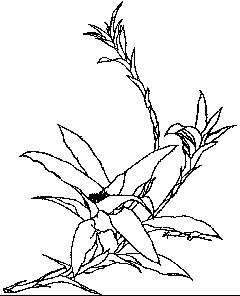
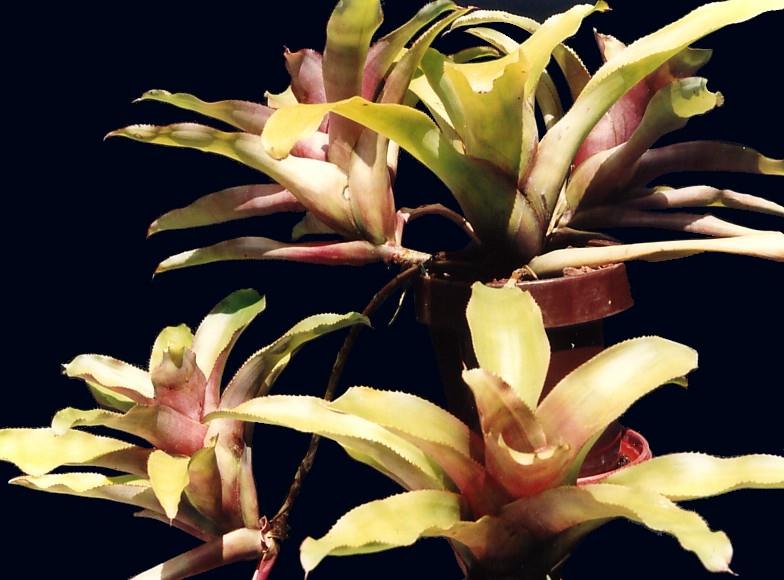
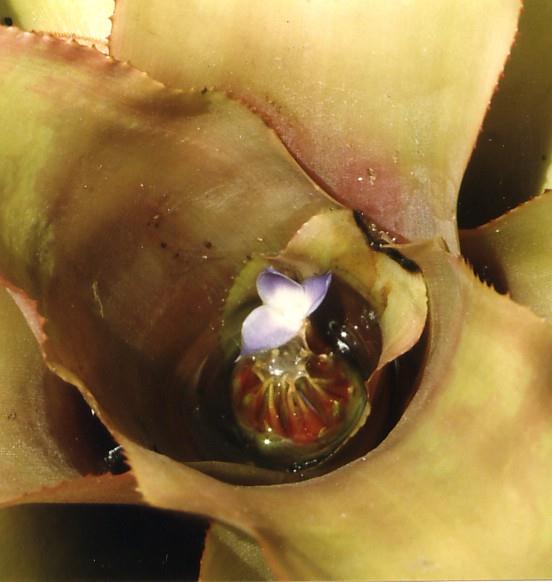
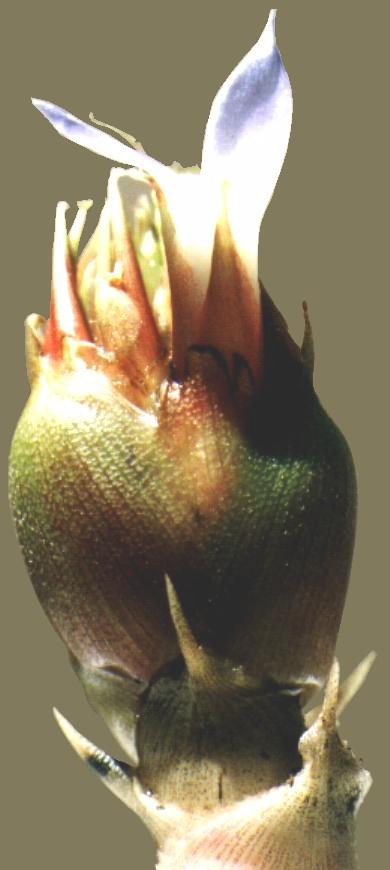
| Lisa C. Megahen, unpublished. |
With approval from Derek Butcher/fcbs. Originally as scandens. |

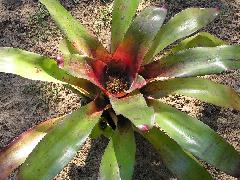
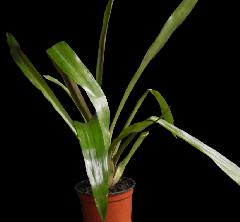
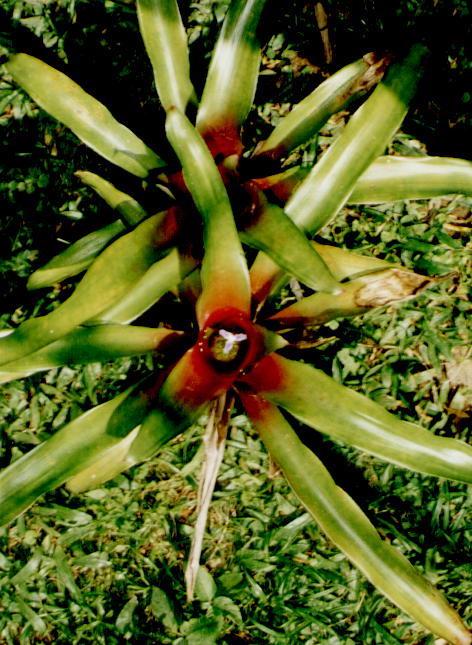
| scandens clone 2. Derek Butcher. |
Ken Woods. ("From Ruby Ryde.") |
Ian Hook 08/08, "from Ken Woods". |
Viv Quarry.* |
* Viv Quarry is developing a website "Bromeliads from Brazil" on behalf of the Brazilian Society of Bromeliads.
See www.vivquarry.com/ivopenna/index.html
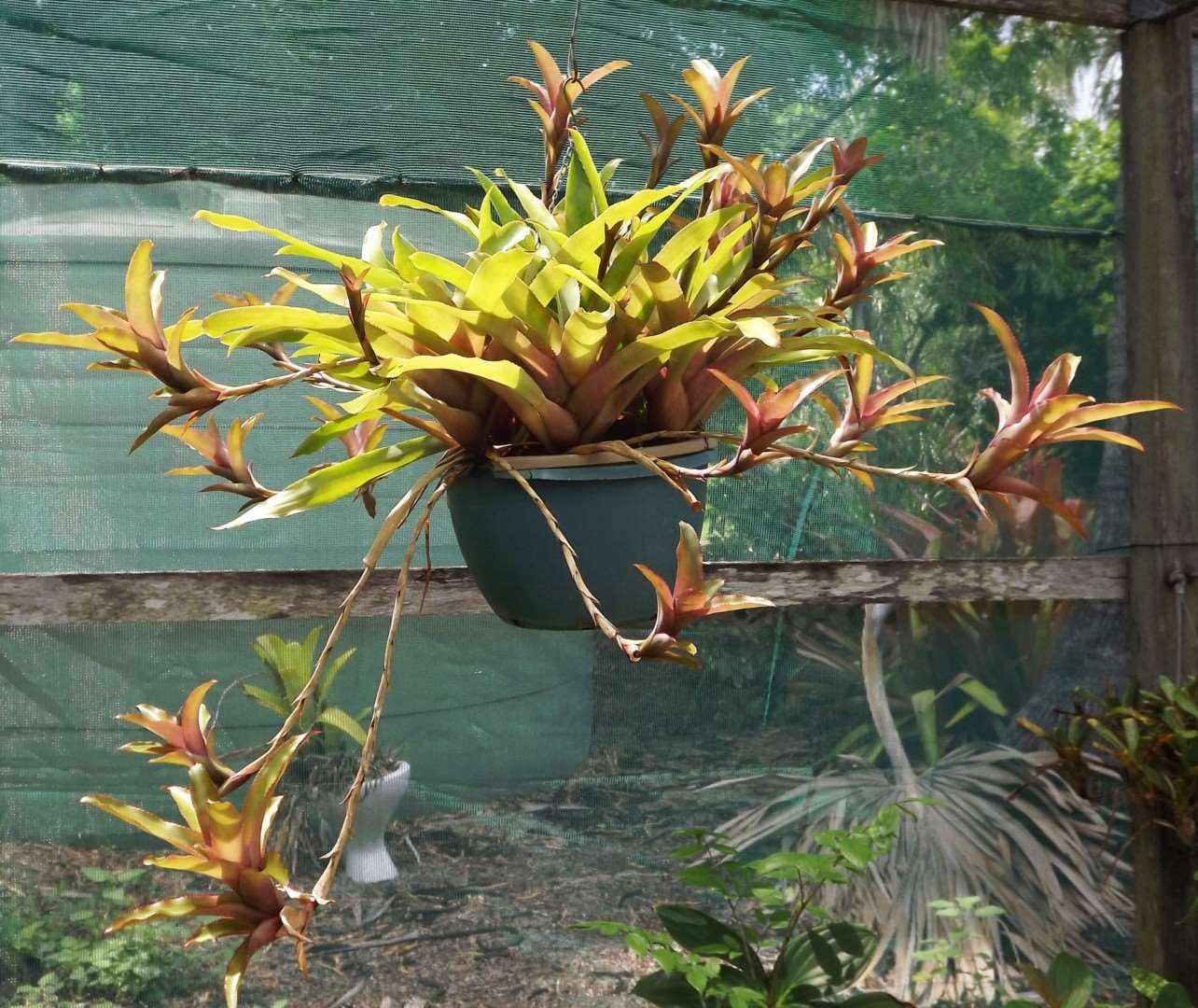


| sapiatibensis Valerie Honeywood 04/21 |
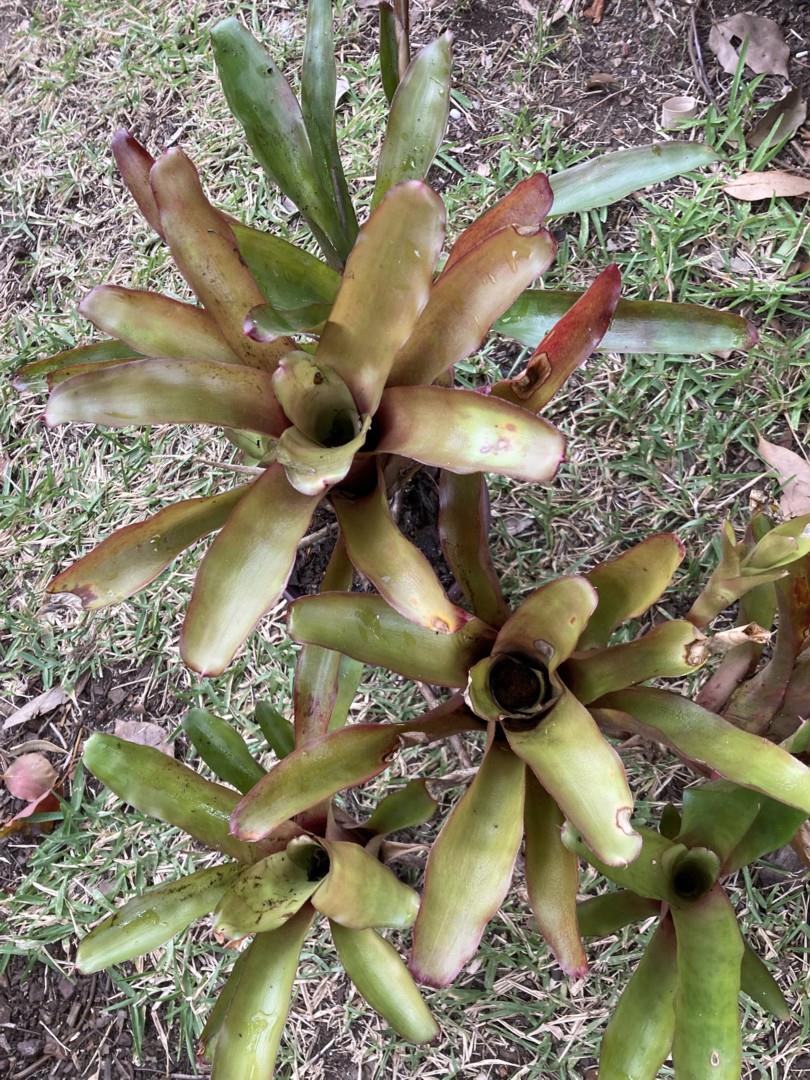
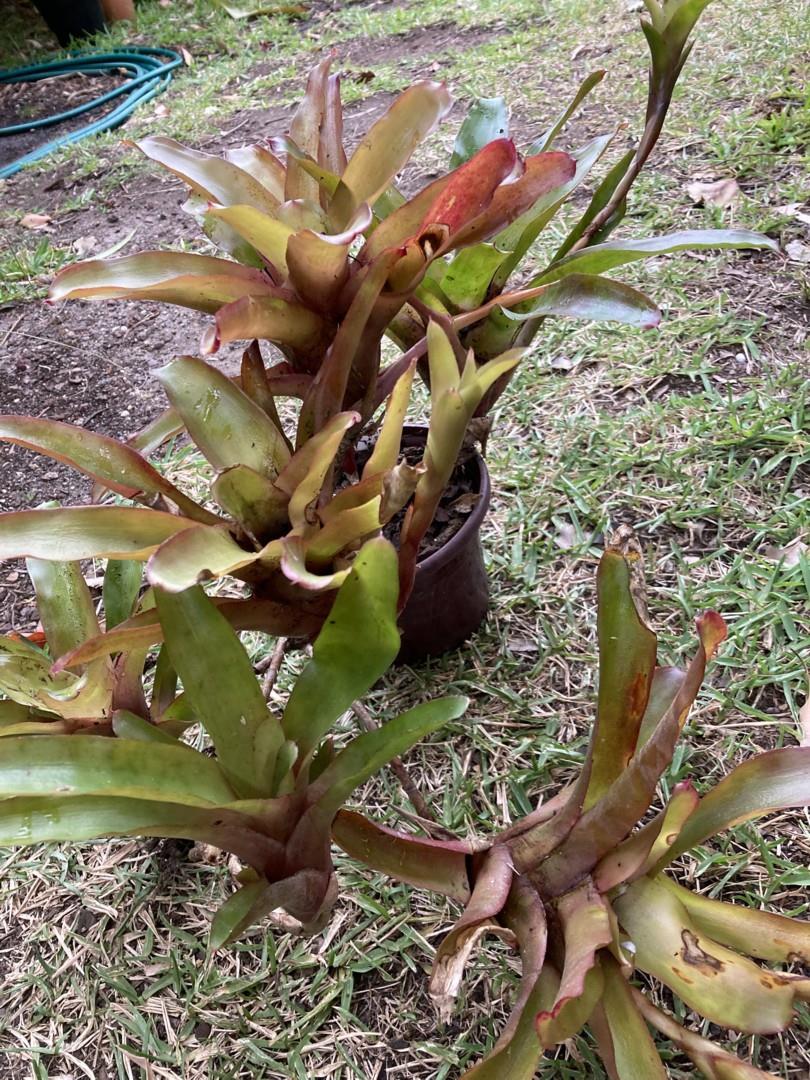
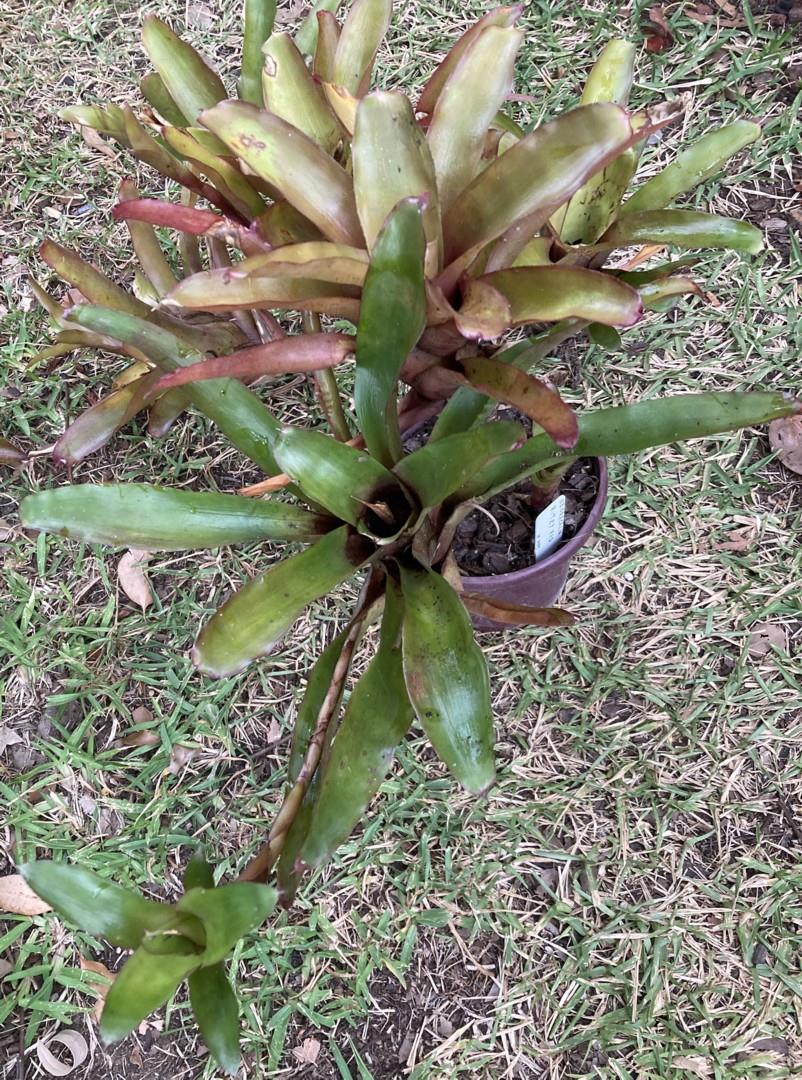
| Ian Hook 03/25 as 'Red Ritzy' or "serra da gracica"(location) |
Ian Hook ... "There is a plant in sydney alternately labelled 'Red Ritzy' or "serra da gracica"(location). It is accnowledged that it is NOT 'Red Ritzy'(unregistered), 'Ritzy Red' OR 'Ritzy'.
Kerry McNicol has it as an undescribed Neo. species from "serra da gracica" (or other spellings) she got from Queensland.
To me it looks like yet another form of sapiatibensis (formerly scandens) or one of many hybrids closely resembling sapiatibensis."
Misnamed Bromeliads, No.11: in Journ. Brom. Soc. 42 (2):1992
Neoregelia sapiatibensis Pereira & Penna by Harry E Luther
During the 1980 World Bromeliad Conference in Orlando, Florida, Luiz Correia de Araujo introduced into North American horticulture an interesting, very stoloniferous Neoregelia species. Recognizing it as an undescribed species, the present author applied the provisional epithet "scandens" with full intention of validating the name "eventually."
The plants multiplied like rabbits, attained wide distribution in cultivation as Neoregelia "scandens" and "eventually" dragged on for a decade. Unknown to me, the Brazilian botanists Pereira and Penna described this species as new in Boletim no.62 (February 1985) of the Museu Botanico Municipal, Curitiba, and named it Neoregelia sapiatibensis. I have only recently obtained a copy of this publication and now urge all readers to change the tags on their Neoregelia "scandens" to N. sapiatibensis, an alteration possibly requiring a label upgrade to 6-inch size.
Neoregelia sapiatibensis.
Pereira and Penna Bol.Mus.Bot.Mun.Curitiba 62:2-3. 1985
Plant flowering ca. 40cm high, stoloniferous, stolons ca. 40cm long,
Leaves many, ca. 35cm long, ligulate, rigid, forming a rosulate inflated base funnelform, 12cm long,
Sheath sub-elliptic, ca.8cm long, max. width 5cm, both sides whitish, punctate brown lepidote,
Blades sub-linear ca. 27cm long, max width ca. 4cm, tip acute apiculate, both sides green or reddish, upper side inconspicuous lepidote, underneath dense punctulate white lepidote, margins dense spined, spines ca. 1mm long, pointing upwards, dark purple, 3mm apart.
Scape 30mm long, 7mm diam.,
Scape bracts foliaceous, toothed, long apiculate, white, both sides punctate brown lepidote,
Involucral bracts 35mm long, ovate, acute, apiculate, membranaceous, green or reddish, entire, closely nerved,
Inflorescence simple, sub-globose, top flattened, 30mm diam.,
Floral bracts narrow lanceolate, 30mm long, 8mm wide, green or reddish, entire, towards the tip slightly keeled, tip spined, equalling the middle of the sepal.
Flowers with pedicel 40-50mm long,
Pedicel 5-10mm long, white.
Sepal slightly asymmetric, 20mm long, lanceolate, short acuminate, joined for 2mm, glabrous, middle bright red, above green.
Petal 32mm long, 3mm joined, blades 10mm long, ovate, acute, violet, spreading at anthesis,
Stamens 20mm long, Filament flattened, joined to petal for 6mm, white, Anthers lanceolate, 4mm long, apiculate, base blunt arrow shaped, dorsifixed above the base.
Ovary cylindric, 10mm long, white, Epigynous tube 1.5mm long, Placenta joined at the middle of the loculus, Ovules obtuse.
Type State of Rio de Janeiro, Barra de Sao Joao, leg. Luiz K Correia de Araujo no 40 26/9/1982 Holotype HB; Sao Pedro Aldeia, Morro Sapiatiba 300msm., leg Elton M C Leme no. 444, 23/2/1983. Paratype HB
Differs from N. farinosa in
Floral bracts much smaller, 30mm compared with 45mm.
Pedicels shorter , 5-10mm compered to 16mm.
Sepals short acuminate almost symmetric.
Leaf sheaths narrow elliptic not broad elliptic ovate, green not purple brown.
Misnamed Bromeliads, No.11: in Journ. Brom. Soc. 42 (2):1992
Neoregelia sapiatibensis Pereira & Penna by Harry E Luther
During the 1980 World Bromeliad Conference in Orlando, Florida, Luiz Correia de Araujo introduced into North American horticulture an interesting, very stoloniferous Neoregelia species. Recognizing it as an undescribed species, the present author applied the provisional epithet "scandens" with full intention of validating the name "eventually."
The plants multiplied like rabbits, attained wide distribution in cultivation as Neoregelia "scandens" and "eventually" dragged on for a decade. Unknown to me, the Brazilian botanists Pereira and Penna described this species as new in Boletim no.62 (February 1985) of the Museu Botanico Municipal, Curitiba, and named it Neoregelia sapiatibensis. I have only recently obtained a copy of this publication and now urge all readers to change the tags on their Neoregelia "scandens" to N. sapiatibensis, an alteration possibly requiring a label upgrade to 6-inch size.
See also http://vivquarry.com/ivopenna/index.html
12/11/09 Derek Butcher to Ian Hook with pics & this doc
Ian
In the SBBr site there is a N. sapiatibensis which has me confused.
There is also a photo on Bromeliads in Australia that has me confused too. How would you like to brush up on the enclosed and when you have your midnight chat with Viv put it to him!
UD
12/11/09 Ian Hook to Derek Butcher
Sorry, all too subtle for me.
Brazil has pics, I have pics, you have sent more pics, and you are confused.
I'm sure there are some differences between all these pics and descriptions, but I wouldn't know what in particular to look for, or is significant.
Ken's plant might look "tainted" or maybe just conditions. Not quite sure what you would like me "to put" to Viv ?, and not too sure that Viv would get it either.
His email is xxx. I can pass things on if you want, but would need to know - is his photo in doubt? or his description (presumably from Periera & Penna) possibly in error?
Ian
12/11/09 Derek Butcher to Harry Luther
Subject: Neo sapiatibensis.
Harry
Did you realise that the SBBr have a website? There are some interesting photos there which has had me investigating - what's different!
We did get a N. scandens into Australia years ago and it seems to agree with your drawing in JBS 1992 but not quite the description of N. sapiatibensis. No mention is made of the red centre at anthesis.
Would you have an old photo of N. scandens? Any other comments welcome.
UD
13/11/09 Harry Luther to Derek Butcher
Its all the same. I have 2 or 3 collections including a clonotype and all are very similar including a reddish center.
I check the Brasilians site a few times a year.
HEL
13/11/09 Derek Butcher to Ian Hook
Ian
Perhaps I beat the gun on this one. It needs a bit of research in Sydney with Ruby Ryde in the middle. In the notes by Harry Luther you will see the name scandens mentioned. In the 1980s we were growing N. scandens from Ruby. The first plant I got was like Harry's drawing. The second plant a few years later was bigger and I felt had been grown from seed.
Questions
Did Ruby import a plant called N. scandens. Was she at the 1980WBC?
Did it come from seed
Has she grown on seed from her plant?
I don't think we will get anywhere but it may be worth a try.
I'll be sending a photo of my stoloniferous plant to Harry for his comments. We can then chase Viv as to where he got his photo
UD
14/11/09 Derek Butcher to Ian Hook
Ian
Not the (Harry Luther) answer I expected in that you can get variation in the coloured centre of the leaf cup!!
I can see an article coming on! But in the meantime you might like to upload my photos of N. sapiatibensis including the attached as being in OZ and put in the Brazilian one saying there is something odd going on.
In the meantime chase up Ruby AND ask Ken where he got his plant and where did it get red tips to the leaves and strong spines!
UD
17/11/09 Ian Hook to Ken Woods
Neo. sapiatibensis = scandens
Ken:
Derek has spotted that the formal definition for sapiatibensis does NOT mention anything about a red centre.
And Harry Luther agreed that what he has as sapiatibensis also flushes at antithesis.
So Derek would like to test your memory of where you originally got your "scandens" from, to try to track it in Australia.
He also (cheekily?) asked how-come your pic on our web is so much redder in centre AND red leaf tips AND such strong spines.
It seems it may need looking at world-wide. So, any record of where yours may have come from ?
Ian
19/11/09 Ken Woods to Ian Hook
Ian, my plant came from Ruby, might be one she obtained in Brazil in which case look forward to some interesting debate. will leave it to you to quizz her for origin.
Ken
Neoregelia sapiatibensis by Butcher 11/2009.
This all started for me in the 1980's when I acquired a plant from Ruby Ryde called Neoregelia sapiatibensis which I did not know much about because it had appeared in no literature. Coming from Ruby I felt it had to be a species.
When it flowered I took photos and dissected the flower and took notes for 'later on'!
In 1992 I was surprised to read the following and my plant certainly agreed with the drawing.
"Misnamed Bromeliads, No.11": in Journ. Brom. Soc. 42 (2):1992
Neoregelia sapiatibensis Pereira & Penna by Harry E Luther
During the 1980 World Bromeliad Conference in Orlando, Florida, Luiz Correia de Araujo introduced into North American horticulture an interesting, very stoloniferous Neoregelia species. Recognizing it as an undescribed species, the present author applied the provisional epithet "scandens" with full intention of validating the name "eventually." The plants multiplied like rabbits, attained wide distribution in cultivation as Neoregelia "scandens" and "eventually" dragged on for a decade. Unknown to me, the Brazilian botanists Pereira and Penna described this species as new in Boletim no.62 (February 1985) of the Museu Botanico Municipal, Curitiba, and named it Neoregelia sapiatibensis. I have only recently obtained a copy of this publication and now urge all readers to change the tags on their Neoregelia "scandens" to N. sapiatibensis, an alteration possibly requiring a label upgrade to 6-inch size."
In the late 1990's I was able to obtain the original description of Neoregelia sapiatibensis in Latin and Portuguese which I duly translated so you will now see it for the first time in English.
(See Pereira and Penna Bol.Mus.Bot.Mun.Curitiba 62:2-3. 1985 above.)
In October 2009 I found out about a website being run for the Brazilian Bromeliad Society, SBBr and increased my knowledge by referring to the photographs they have there. Note that there is a link to this website on our very own Bromeliads in Australia.
Here, Neoregelia sapiatibensis had a much redder centre on flowering to what I was used to. Referral to Harry Luther divulged that Marie Selby Botanic Gardens had several clones of this species and there was variation in the intensity of the red centre even though this is not mentioned in the description.
There is one small problem in that Ken Woods has a plant also from Ruby that has red tips to the leaves which have strong spines suggesting that seed has been grown from N. "scandens" but a little foreign pollen has crept in.
Investigations have revealed that in the 1980's Ruby saw Neoregelia scandens on the BSI seed list and because she had never heard the name sent for a packet. These were grown on and because of Harry Luther's article the name was changed to N. sapiatibensis.
The 1980's was when I started getting seed from the same source when Diane Pippin held the reins. She was a five foot nothing dynamo! This was when I started my crusade to get the source of the seeds advised because I was getting hybrids when I was after species. The hybrid problem seemed more prevalent with seed from Florida. Needless to say, my request for such data remains unanswered to this day. Now you know why these days I deal direct with the actual seed collector where at least I can follow Bill Morris's credo "Analyse your results!"
Photos of my plant, the Brazilian plant and the drawing are enclosed so you can see my problem.
Updated 10/03/25













